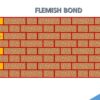Whether you’re into construction, or are working on some interior design project; you might be looking for “how to calculate cubic feet”.
Finding cubic footage or cubic feet and knowing how many cubic yards are in a feet are some of the basic conversions that every civil engineer, architect, or DIY enthusiast must know.
You might want to know how many cubic feet of sand you want to fill under the floor or how many cubic feet or concrete you must get for your driveway or patio. So, that’s why we recommend you go through our today’s guide as it will help you in your day-to-day measurements and conversions.

What is a cubic feet or cubic footage?
Cubic feet is a unit of measurement that shows the volume of an object or material. It’s a unit indicating three dimensions. So, whenever you’re dealing with quantities like:
- Filling concrete
- Working with sand or clay fill in landscaping
- Demolishing work
- Filling liquids in a tank
- Or making water tanks of concrete
- Dealing with sewerage system capacities
- Dirt fill in volume
- Capacity of a water tank or bottles
Also Read: How much is an acre in square feet – Acre to sq ft (With Calculator)
Cubic feet is represented as 1 ft3. It means the volume of an object or material will be 1 cubic feet when all of the three sides are having a length of 1 feet. So, it represents the space that will be occupied by the object or material in three-dimensions.
Some other units of volume are:
- Cubic meters
- Gallons
- Liters
- Cubic yards
Also Read: How far apart can you span a ceiling joist? (2×4, 2×6, 2×8)
Formula
Formulas used to calculate an object’s volume in cubic feet depend on its shape.
Here are some basic formulas:
- For a cube: Volume = Length x Width x Height;
- For rectangular prisms it would be: Length x Width x Height
- for cylindrical objects: Volume = Pi x (Radius)2 x Height
- For a sphere: Volume = (4/3)x p x Radius3
Each of these formulae will yield results in cubic units such as cubic meters or feet; therefore if you want the output in feet instead, provide measurements in feet in your formulae.
Difference b/w Cubic feet and Cubic meter
| Cubic feet | Cubic meter |
| Cubic feet are a larger unit. e.g. 1 cubic feet =0.0283168 meter. | A cubic meter is a larger unit. e.g. 1 cubic meter =35.31 cubic feet |
| To convert cubic feet to cubic meters, you can multiply the number of cubic feet by 0.0283. | To convert cubic meters to cubic feet, you can multiply the number of cubic meters by 35.31. |
| Cubic feet are commonly used in the United States to measure the volume of rooms, buildings, and containers. | Cubic meters, on the other hand, are commonly used globally in scientific and engineering applications, such as measuring the volume of liquids and gases. |
| Cubic feet and cubic meters are both units of measurement used to describe the volume of three-dimensional objects, but they differ in terms of their size and the systems of measurement they are used in. | Cubic feet and cubic meters are both units of measurement used to describe the volume of three-dimensional objects, but they differ in terms of their size and the systems of measurement they are used in. |
Applications of Cubic Feet
To convert cubic feet to cubic meters, multiply their number by 0.0283. For cubic meters to cubic feet conversions, divide their total volume by 35.31.
Also Read: 3 / 12 roof pitch rafter length – Calculator – Chart – 3 in 12 roof pitch rafter
Cubic feet are frequently employed in the United States to measure the volume of rooms, buildings, and containers; cubic meters, on the other hand, are frequently employed globally in scientific and engineering applications to determine liquid or gas volumes.
Cubic feet and cubic meters are both units of measurement used to describe the volume of three-dimensional objects, but differ in terms of their size and measurement systems used. Within their differences lies their applications; both units describe volumes equally. Specifically, cubic feet measure volume while cubic meters are more accurate at quantifying it. Essentially they serve different functions.
Cubic feet is an inherently useful measurement unit with numerous applications across industries. Here are a few common examples:
- Construction: Builders use cubic feet calculations to assess a project. For instance, the amount of concrete necessary for foundation construction can be determined using this metric.
- Shipping: Cubic feet is used as a measurement to establish cargo volume inside shipping containers. Shipping companies rely on this measurement to determine how much freight can fit inside one shipping container at one time.
- Manufacturing: Cubic feet are used in manufacturing to determine how much storage space is necessary for finished goods or raw materials, and manufacturers can also use this measurement to select an equipment size suitable for production.
- Home Appliances: Cubic feet are commonly used to measure the interior space of appliances like refrigerators, freezers and ovens.
Also Read: Weight of concrete per cubic foot – With Examples – (Including Calculator)
How Can We Calculate Cubic Feet?

Example 1:
Suppose you have a rectangular prism that measures 3 feet in length, 2 feet in width, and 4 feet in height.
Solution:
Given
Length=3 feet
Width=2 feet
Height=4 feet
Step 1:
To find the volume use the formula to,
Volume = Length × Width × Height
Step 2:
Putt the given value in the formula
Volume= 3 ft × 2 ft × 4 ft = 24 cubic feet
Example 2:
A shipping container measures 20 feet in length, 8 feet in width, and 8 feet in height. Calculate the container’s cubic foot volume.
Solution:
Given
Length=20 feet
Width=8 feet
Height=8 feet
Step 1:
To calculate the volume of the shipping container in cubic feet, we can use the formula for a rectangular prism: Volume = Length × Width × Height.
Step 2:
put in the given measurements, we get:
Volume = 20 ft × 8 ft × 8 ft
Volume = 1,280 cubic feet
Shipping companies use the volume of shipping containers to determine how much cargo they can transport in a single container, and this information is essential for logistics planning and cost calculations. A cubic feet calculator is a very effective way to find the volume of shipping containers in different units.
Frequently asked question
Question 1:
What are some common uses of cubic feet?
Answer:
Cubic feet are widely utilized across industries, including construction, shipping and manufacturing. Builders rely on cubic feet as a measure for materials needed during projects while shipping companies use this measurement to estimate how much cargo can fit into one container. Question 2: occupy your answer is what field / industry do cubic feet measure from? occupy Question 2 if answered “yes” by following our questioning answers above? occupy our Answer: Our Answer: By far our favorite measurement.
How can I convert cubic feet to other units of volume?
Answer: For this conversion, conversion factors can be used; one cubic foot equals approximately 0.28 cubic meters, 7.48 gallons or 28.32 liters. Question 3: Exactly what conversion factors can be used? –
Also Read: How to Calculate Amount of Retaining Wall Materials Needed?
What is the maximum volume that can be measured in cubic feet?
Answer: There is no theoretical limitation on how much volume can be measured in cubic feet, though measurements will likely be restricted by precision of instruments and space to store or transport an object being measured.
Wrap Up
In this article, we have explored the definition and formulae associated with cubic feet as well as their differences from cubic meters and applications in terms of examples and diagrams. By studying this article in full detail anyone should be able to defend this subject confidently.


















